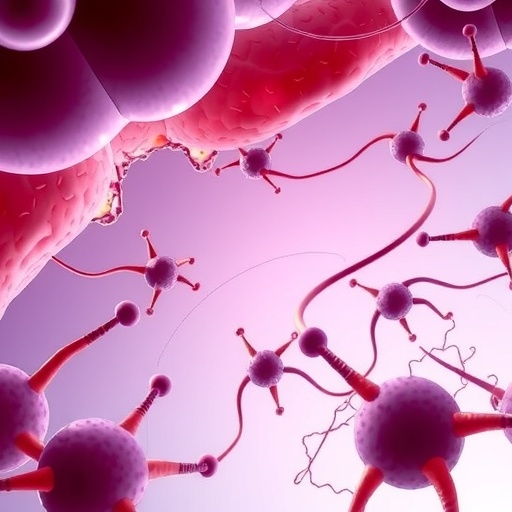Washington, DC, February 1, 2017 – Early predictors of anxiety and depression may be evident in the brain even at birth, suggests a study published in the February 2017 issue of the Journal of the American Academy of Child and Adolescent Psychiatry (JAACAP). Analyzing brain scans of newborns, the researchers found that the strength and pattern of connections between the amygdala and certain brain regions predicted the likelihood of the babies developing greater internalizing symptoms like sadness, excessive shyness, nervousness, or separation anxiety by age two. Such symptoms have been linked to clinical depression and anxiety disorders in older children and adults.
"The fact that we could see these connectivity patterns in the brain at birth helps answer a critical question about whether they could be responsible for early symptoms linked to depression and anxiety or whether these symptoms themselves lead to changes in the brain," said Cynthia Rogers, MD, an assistant professor of child psychiatry. "We have found that already at birth, brain connections may be responsible for the development of problems later in life."
Initially, Dr. Rogers and her team set out to identify differences in functional brain connectivity – the coordination of activity across different parts of the brain – between babies born prematurely and others born at full term. They conducted functional MRI scans in 65 full-term newborns and 57 premature infants born at least ten weeks early. The latter were scanned on or near their due dates.
The researchers looked for differences in the connectivity patterns across various regions of the brain hoping to find evidence to explain why premature babies face a greater risk of developing psychiatric problems – including depression and anxiety – later in life. In particular, the team focused on how a structure involved in the processing of emotions, called the amygdala, connects with other brain regions.
First, they found that healthy, full-term babies had patterns of connectivity between the amygdala and other regions of the brain that were similar to the patterns previous studies had seen in adults. Although there were similar patterns of connectivity in premature infants, the strength of their connections between the amygdala and other brain regions was decreased.
Most interestingly, they noted that connection patterns between the amygdala and other structures – like the insula, which is involved in consciousness and emotion, and the medial prefrontal cortex, which plays roles in planning and decision making – increased the risk of early symptoms related to depression and anxiety.
When the babies turned two years old, a subset received follow-up assessments to look for early symptoms of anxiety and depression. The researchers evaluated 27 of the children who were born prematurely and 17 born at term.
"Children born prematurely were no more likely than full-term children to exhibit early signs of anxiety and depression," Dr. Rogers said. "Part of that may have been due to the fact that a number of the full-term children already were at risk for symptoms due to socio-demographic factors, such as living in poverty or having a mother with clinical depression or an anxiety disorder. Further, the severity of these early anxiety symptoms was correlated with connectivity patterns seen in the infants in both groups."
The researchers also want to evaluate all the children from the study again when they are 9-10 years old to learn whether brain connections continue to influence the risk for depression and anxiety disorders.
"We have a grant under review to bring the preterm children back when they are older, along with the full-term children, and we want to study how their brains have developed over time," Dr. Rogers noted. "We want to determine whether they still have many of the same differences in connectivity, whether there have been any changes in the structural and functional connections in their brains, and how all of that relates to whether they have symptoms of psychiatric disorders."
###
Notes for editors
The article is "Neonatal Amygdala Functional Connectivity at Rest in Healthy and Preterm Infants and Early Internalizing Symptoms," by Cynthia E. Rogers, Chad M. Sylvester, Carrie Mintz, Jeanette K. Kenley, Joshua S. Shimony, Deanna M. Barch, and Christopher D. Smyser (http://dx.doi.org/10.1016/j.jaac.2016.11.005). It appears in the Journal of the American Academy of Child and Adolescent Psychiatry, volume 56, issue 2 (2017), published by Elsevier.
Copies of this paper are available to credentialed journalists upon request; please contact Mary Billingsley at +1 202 587 9672 or [email protected]. Journalists wishing to interview the authors may contact Dr. Cynthia Rogers at [email protected] or (314) 286-0540.
About JAACAP
The Journal of the American Academy of Child and Adolescent Psychiatry (JAACAP) is the official publication of the American Academy of Child and Adolescent Psychiatry. JAACAP is the leading journal focusing exclusively on today's psychiatric research and treatment of the child and adolescent. Published twelve times per year, each issue is committed to its mission of advancing the science of pediatric mental health and promoting the care of youth and their families. http://www.jaacap.com
The Journal's purpose is to advance research, clinical practice, and theory in child and adolescent psychiatry. It is interested in manuscripts from diverse viewpoints, including genetic, epidemiological, neurobiological, cognitive, behavioral, psychodynamic, social, cultural, and economic. Studies of diagnostic reliability and validity, psychotherapeutic and psychopharmacological treatment efficacy, and mental health services effectiveness are encouraged. The Journal also seeks to promote the well-being of children and families by publishing scholarly papers on such subjects as health policy, legislation, advocacy, culture and society, and service provision as they pertain to the mental health of children and families.
About Elsevier
Elsevier is a world-leading provider of information solutions that enhance the performance of science, health, and technology professionals, empowering them to make better decisions, deliver better care, and sometimes make groundbreaking discoveries that advance the boundaries of knowledge and human progress. Elsevier provides web-based, digital solutions — among them ScienceDirect, Scopus, Research Intelligence and ClinicalKey — and publishes over 2,500 journals, including The Lancet and Cell, and more than 35,000 book titles, including a number of iconic reference works. Elsevier is part of RELX Group, a world-leading provider of information and analytics for professional and business customers across industries. http://www.elsevier.com
Media Contact
Mary Billingsley
[email protected]
202-587-9672
@elseviernews
http://www.elsevier.com
############
Story Source: Materials provided by Scienmag




